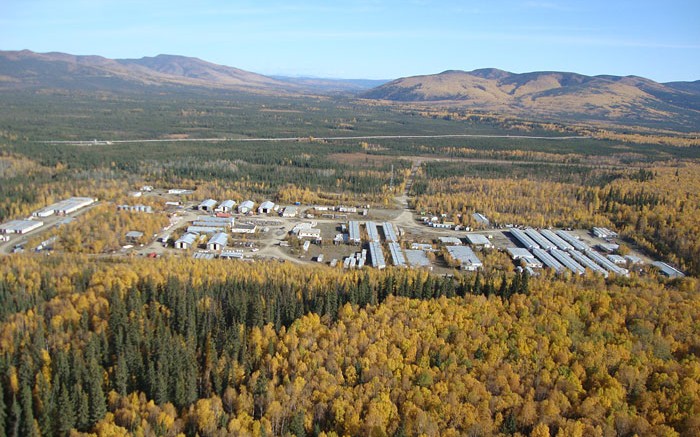It doesn’t look like International Tower Hill Mines’ (TSX: ITH; NYSE: THM) huge Livengood gold project in Alaska will be hosting a mine construction crew any time soon. The company has released a feasibility study that shows a future mine would only reach a positive net present value (NPV) if gold prices climb back above the US$1,600 per oz. mark.
Until then, investors will have to hope the company can find a strategic partner that believes in the notion that large-scale, low-grade deposits will return to favour.
The single most damaging metric to the NPV was rising capex. The company’s preliminary economic assessment (PEA), which was largely done in 2010 and reported in 2011 pegged capex at US$1.6 billion.
The new feasibility study, however, estimates it would cost US$2.7 billion just to build the project. Sustaining capex would add another US$667 million to the tab and reclamation and closure costs are estimated to be another US$353 million.
Two of the main reasons for the jump in initial capex were the realization that a tailings facility would need to be lined and that a camp would need to be built. The original PEA did not outline these two relatively sizeable costs.
With capex rising and the price of gold falling the poor metrics of the study aren’t surprising, but just how bad things look at current gold prices does come as a bit of a shock.
On August 14 the price of gold was sitting at US$1,334. per oz. That is awfully close to the US$1,300 per oz. price that the study says would generate a NPV of negative US$1.336 billion and an internal rate of return of negative 7.2%. The NPV was calculated using a discount rate of 5%.
Even at a gold price of US$1,600 per oz., the NPV remains underwater at negative US$50 million while the IRR rises to a paltry 4.6%. It isn’t until a gold price of US$1,700 per oz. is used that both NPV and IRR are positive with the NPV rising to US$336 million and the IRR coming in at 7.3%.
With numbers like that, Tower Hill’s CEO and president Donald Ewigleben could do little else but concede that the project is not economic in the current environment. Instead, he emphasized that the project’s proximity to good infrastructure, its location in a mining- friendly region 125 km northwest of Fairbanks, and the scale of the project would be the keys to attracting a strategic partner and one day getting the mine into production.
In the near-term, Ewigleben said the company will look to protect its $19.9-million treasury as it looks at ways to drive down the costs of a future mine.
When a questioner on a conference call related to the release asked why the company would not simply sit on the report until it did find a way to drive costs down, Ewigleben said the company felt it owed it to investors to be as transparent as possible.
“We all know in this industry that for years several companies have underestimated the cost of projects,” he said. “We made sure, to the best of our ability, that we have defined every potential cost and used those conservative numbers to avoid that trap.”
As for possible ways that costs could be cut, the most obvious place to start would be scale. The current feasibility study considered a mine that would process 100,000 tonnes of ore per day with gold recoveries of over 80%. Through the first five years the annual production would be 700,000 oz. gold.
Tower Hill decided to outline such a big project in order to generate economies of scale that could make up for the relatively low grade of the deposit. It will likely now consider a more modest facility.
Livengood has measured resources of 731 million tonne grading 0.61 gram gold per tonne for 14.4 million oz. gold; 71 million indicated tonnes at 0.56 gram gold for 1.3 million oz. gold; and 266 million inferred tonnes at 0.52 gram gold for 4.4 million oz. gold.
And while the head grade at the planned mill is estimated to average 1.08 grams per tonne in the first year, the number falls to a staggeringly low 0.39 gram per tonne in years 13 and 14.
Livengood was acquired from AngloGold Ashanti (NYSE: AU) in 2006. Shortly after the acquisition the company began an aggressive drill campaign that had investors believing in a large scale, world-class deposit. Those early results turned Tower Hill into a market darling as its stock went from trading in the $1.25 range at the end of 2008 all the way up to $9.98 by the end of 2010.
By early 2011, after its PEA was released, the decline had begun. The downfall has continued with the release of the feasibility study as the stock dropped 54%, or 50¢ following the news. At press time shares of International Tower Hill traded for 55¢ apiece.


Be the first to comment on "ITH’s Livengood struggles at today’s gold price"